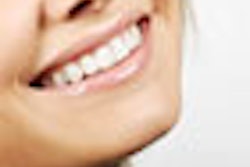Dear Cosmetic Dentistry Insider,
Perfect smiles are in high demand these days, but recent news reports have raised concerns that some patients feel pushed into cosmetic procedures they don't necessarily need.
Experts agree that while it is a good idea to make patients aware of procedures that may have aesthetic benefits for them, responsible aesthetics isn't just about making patients look better but making them healthier as well. Read more about striking this delicate balance in our latest Cosmetic Dentistry Insider Exclusive.
Also in this issue: The upcoming International Association for Dental Research (IADR) conference will feature some interesting cosmetic dentistry studies. In one, researchers from Portugal evaluated the efficacy and safety of light-activated, in-office dental bleaching and found that 35% hydrogen peroxide alone is effective in whitening teeth and that light activation does not improve the effect. Is light activation really beneficial? The experts weigh in.
Another IADR presentation contends that although some clinicians recommend rearranging the Vita Classical shade guide according to value to achieve better results, this method may not, in fact, be more effective. Read more.
And while good shade matching is tricky enough with porcelain materials, composites can pose an even bigger challenge. Composite shades do not match well to the Vita shade guide tabs even when the layering technique is used, according to a study in the Journal of Esthetic and Restorative Dentistry. Click here to read more.
Meanwhile, did you think bisphosphonate-associated osteonecrosis (BON) was your only concern before performing invasive dental procedures on patients who have been on bisphosphonate therapy? Think again. Researchers from the University of Tennessee Health Science Center found that, despite much media attention regarding potential BON risks, many patients on these medications may be completely unaware of this potential side effect. Read more.
In other Cosmetics Community news, preliminary results from a $19 million study designed to help determine predictors and causes of temporomandibular joint disorder (TMJD) showed that TMJD patients are more sensitive to pain than healthy people. Click here for more details.
Also, sialoliths can wreak havoc in the salivary glands, often requiring invasive surgery through the face or neck that can lead to nerve damage, cosmetic scarring, even gland removal. Advances in endoscopic treatment, however, offer patients a less invasive alternative. Read more.
Finally, Merck and Procter & Gamble continue to face legal battles over Fosamax and Fixodent, respectively. Click here and here for details.



















